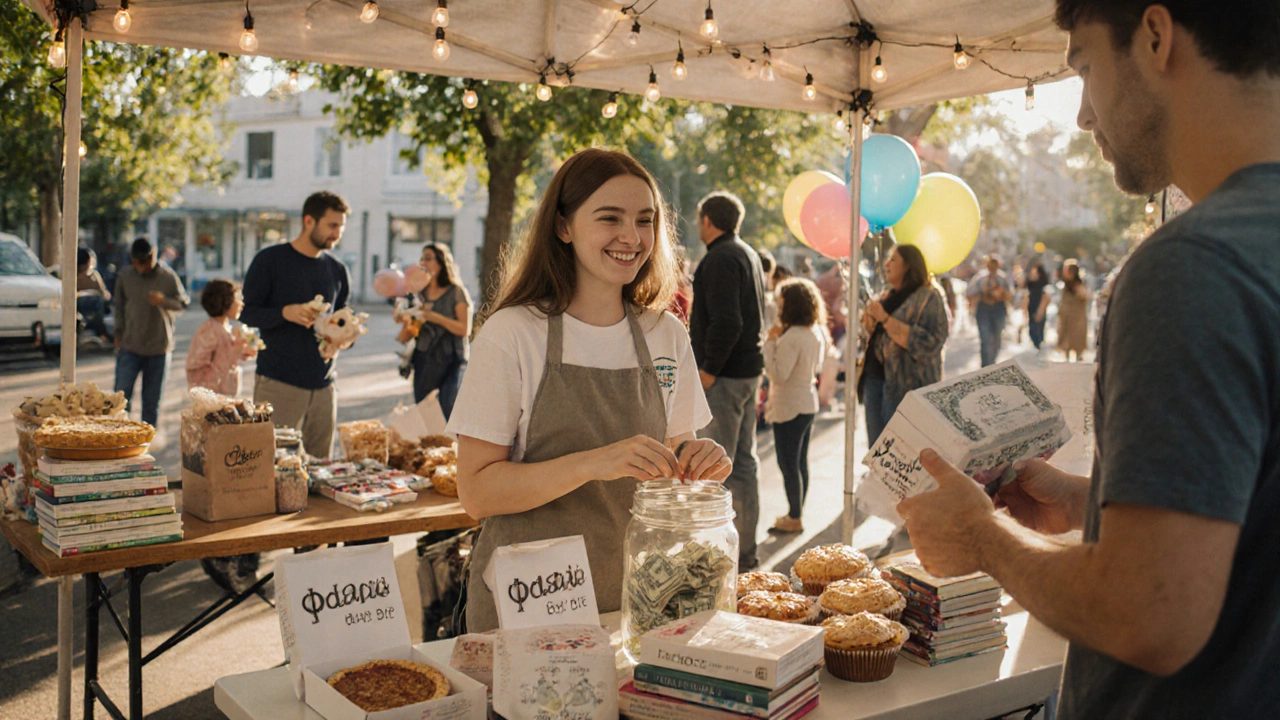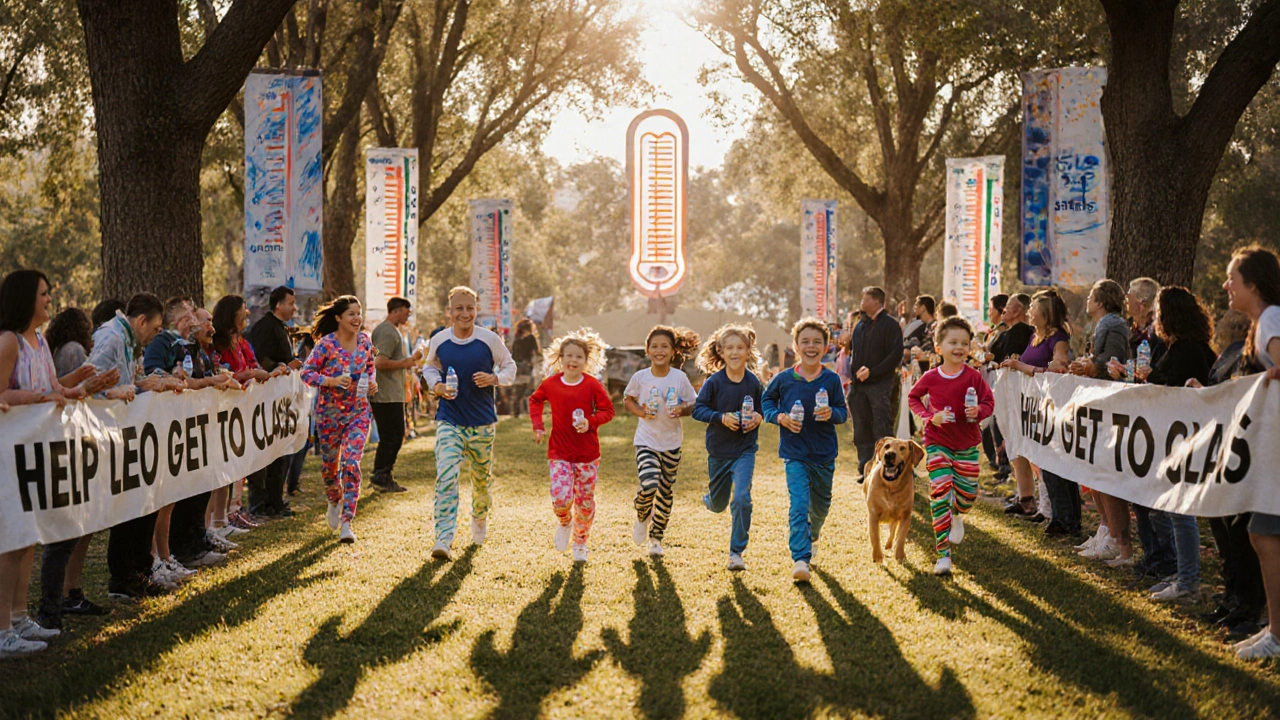Charity Event Fundraising Calculator
Calculate Your Fundraising Goals
Based on your estimated expenses, this tool will help you determine how much you need to raise for your charity event.
Your Fundraising Results
Your event should aim to raise at least to cover costs.
With an average donation of , you'll need donations to reach your goal.
How your donations will make an impact
$50
Can buy 100 meals for families in need
$100
Provides school supplies for 5 children
$250
Pays for a month of medical supplies
$500
Funds 10 hours of community services
Organizing a charity event doesn’t have to mean big budgets, fancy venues, or professional event planners. In fact, some of the most successful charity events started in backyards, local parks, or school halls. The key isn’t how much money you raise-it’s how much heart you put into it. If you’re wondering how to hold a charity event that actually makes a difference, you’re not alone. Thousands of people in Australia and around the world do it every year, often with little more than a idea, a spreadsheet, and a lot of determination.
Start with a clear purpose
Before you book a venue or print flyers, ask yourself: why are you doing this? Vague goals like “help people” or “raise money” won’t carry you through the hard days. Be specific. Are you raising funds for a local food bank that’s running out of supplies? Supporting a family dealing with medical bills? Building a playground for kids in a low-income neighborhood? The more precise your cause, the easier it is to tell your story-and the more likely people are to care.For example, last year in Sydney, a group of parents raised $28,000 for a new wheelchair ramp at their local primary school. They didn’t say, “We want to help kids.” They said, “Every child deserves to walk into their classroom like everyone else.” That clarity turned a simple idea into a movement.
Choose the right type of event
Not every charity event works for every cause. Your goal should shape your format. Here are a few proven options that work well in Australia:- Community fun runs or walks - Low cost, easy to organize, great for families. Think 5Ks, dog walks, or “pajama runs.”
- Local market days - Sell homemade goods, baked treats, or secondhand books. Perfect for neighborhood involvement.
- Live music nights - Partner with local bands or school choirs. Many artists will play for free if the cause matters.
- Charity auctions - Collect donated items from local businesses. A donated dinner for two from a restaurant can fetch $200+.
- Online challenges - A 30-day yoga challenge, a “no-spend week,” or a social media dance-off. These go viral fast with the right hashtag.
Don’t overcomplicate it. A bake sale in the park with a donation jar can raise more than a fancy gala if it’s authentic and well-promoted. The best events feel like a party, not a fundraiser.
Build a small, focused team
You can’t do this alone-and you shouldn’t try. Even a team of three or four people makes a huge difference. Look for people who bring different skills:- Someone good with social media (to post updates and photos)
- Someone who knows local businesses (to ask for donations)
- Someone organized (to track money, sign-ups, and timelines)
Don’t wait for perfection. Ask someone you trust: “Can you help me with this for two hours a week?” Most people will say yes if you make it easy. Use free tools like Google Sheets to share tasks. Assign roles clearly: who handles permits, who contacts volunteers, who writes the press release.

Get local support
Local businesses are your secret weapon. They want to help-and they want to be seen helping. Don’t just ask for money. Ask for:- Donations: Gift cards, products, services (like printing, catering, or photography)
- Sponsorship: A sign at your event, a mention in your social posts
- Volunteers: Staff from a café to serve coffee, employees from a gym to help set up
When you approach a business, be specific. Instead of saying, “Can you help us?” say, “We’re hosting a family fun day on October 12 and need 10 donated cupcakes. In return, we’ll feature your logo on all our posters and thank you on Instagram.” Most small businesses will say yes. In fact, a 2024 survey by the Australian Charities and Not-for-profits Commission found that 73% of local businesses donated to community events last year.
Plan the logistics (without getting overwhelmed)
You don’t need a project manager to handle this. Just cover the basics:- Location - Parks, schools, community centers often offer free or low-cost space for charity events. Call ahead and ask about permits.
- Date and time - Avoid public holidays if you want maximum turnout. Weekends are best. Morning or early afternoon works for families.
- Permits - If you’re selling food, playing music, or blocking public space, you might need a permit. Check with your local council. In Sydney, most small events under 100 people don’t need one.
- Equipment - Tables, chairs, tents, trash bins. Borrow from friends, local clubs, or ask the venue if they provide them.
- Payment system - Use a free app like Square, PayPal, or Afterpay’s donation tool. Cash is fine too, but always have two people handling money-one to collect, one to record.
Pro tip: Print a simple checklist. Write down every item you need the day before the event. Check it off as you pack. It sounds basic, but 80% of event mishaps happen because someone forgot the extension cord or the change for the donation jar.
Promote like a pro (on a zero budget)
You don’t need a marketing team. You need to talk to people.- Post on local Facebook groups-“Sydney Parents,” “Bondi Community,” “Newcastle Neighbours.”
- Ask your school, church, or workplace to share the event in their newsletter.
- Put up flyers at libraries, cafes, and grocery stores. Use bold text: “Help us build a playground for kids who can’t climb stairs.”
- Reach out to your local newspaper or radio station. They love human-interest stories. Send a short email with a photo and a clear headline: “Local Kids Get New Playground Thanks to Community Fundraiser.”
Don’t just post once. Post three times: one week out, one day before, and the morning of. Use the same photo every time. People remember visuals, not words.

Make it unforgettable on the day
The event itself should feel joyful, not like a chore. Here’s how:- Have a clear sign at the entrance: “Welcome! Today, every dollar helps build a ramp for Leo’s school.”
- Play upbeat music. People stay longer when they feel good.
- Have volunteers thank every person who donates-even if it’s $5. A simple “Thank you for helping Leo” means more than you think.
- Take photos. Not staged ones. Real moments: kids laughing, volunteers high-fiving, someone holding up a donation jar with a grin.
- Have a visible donation tracker-a big poster with a thermometer-style chart. Seeing the number climb keeps people motivated.
And don’t forget the little things: water bottles, sunscreen, hand sanitizer, trash bags. People notice when you care about their comfort.
Follow up with heart
The event doesn’t end when the last guest leaves. In fact, the follow-up is where you build trust for next time.- Within 48 hours, send a thank-you email or post to everyone who helped-volunteers, donors, attendees.
- Share the total raised. Be transparent. “Thanks to you, we raised $14,250. That’s enough for 100% of the ramp, plus safety rails.”
- Post photos and videos. Show the impact. A short clip of the new ramp being used by a child in a wheelchair is worth more than a thousand words.
- Ask for feedback. “What did you love? What would you change?” People want to know their voice matters.
When people feel seen and appreciated, they come back. And that’s how you turn a one-time event into a lasting community tradition.
What to avoid
Here are the most common mistakes-and how to skip them:- Trying to do too much - One great event beats three half-hearted ones.
- Ignoring small donations - $10 from 100 people is $1,000. Don’t overlook them.
- Not having a backup plan - Rain? Move it indoors. Low turnout? Shorten the event. Stay flexible.
- Forgetting to track expenses - If you spend $800 on a venue and $200 on flyers, you need to make at least $1,000 just to break even. Know your costs before you start.
- Not thanking people - Silence feels like ingratitude. Say thank you, loudly and often.
Remember: You’re not trying to run a corporation. You’re trying to connect people to a cause they care about. Keep it simple. Keep it real. And keep going-even if the first event raises only $500. That’s $500 more than if you’d done nothing.
Do I need to be a registered charity to hold a fundraiser?
No. You don’t need to be a registered charity to hold a one-off event. Many community fundraisers are run by individuals or small groups. But if you plan to raise money regularly or collect donations over $10,000, you’ll need to register with the Australian Charities and Not-for-profits Commission (ACNC). For most one-time events, just make sure you’re clear about where the money’s going and who’s receiving it.
How much money should I aim to raise?
There’s no magic number. Focus on covering your costs and then raising as much as you can beyond that. A good rule of thumb: aim to raise at least 3x your total expenses. If you spend $300 on permits, supplies, and promotion, aim to raise $900 or more. But even if you only raise $200 after costs, that’s still $200 that helps someone. Start small, think big.
Can I hold a charity event if I’m under 18?
Absolutely. Many of the most successful youth-led fundraisers in Australia were started by teens. You might need an adult to help with legal paperwork or banking, but the idea, energy, and planning can all come from you. Schools and community centers often support student-led initiatives. Talk to a teacher or local council-they’re used to helping young people make a difference.
What if no one shows up?
It happens. Don’t panic. If turnout is low, shift focus. Turn it into a small gathering with close friends and family. Post live updates on social media. Ask people to donate online instead. You can still collect donations through a link-even if only five people show up, ten others might give online. The goal isn’t the crowd-it’s the impact.
How do I make sure the money goes to the right place?
Be transparent. If you’re raising money for a specific person or family, set up a direct bank transfer with their permission. If it’s for a charity, donate directly to their official account and share the receipt. Always publish a final report: “Here’s how much we raised. Here’s how much we spent. Here’s where the rest went.” Trust is built through honesty, not promises.
Hold your event. Share your story. Let people see the difference they can make. You don’t need permission to help. You just need to start.
